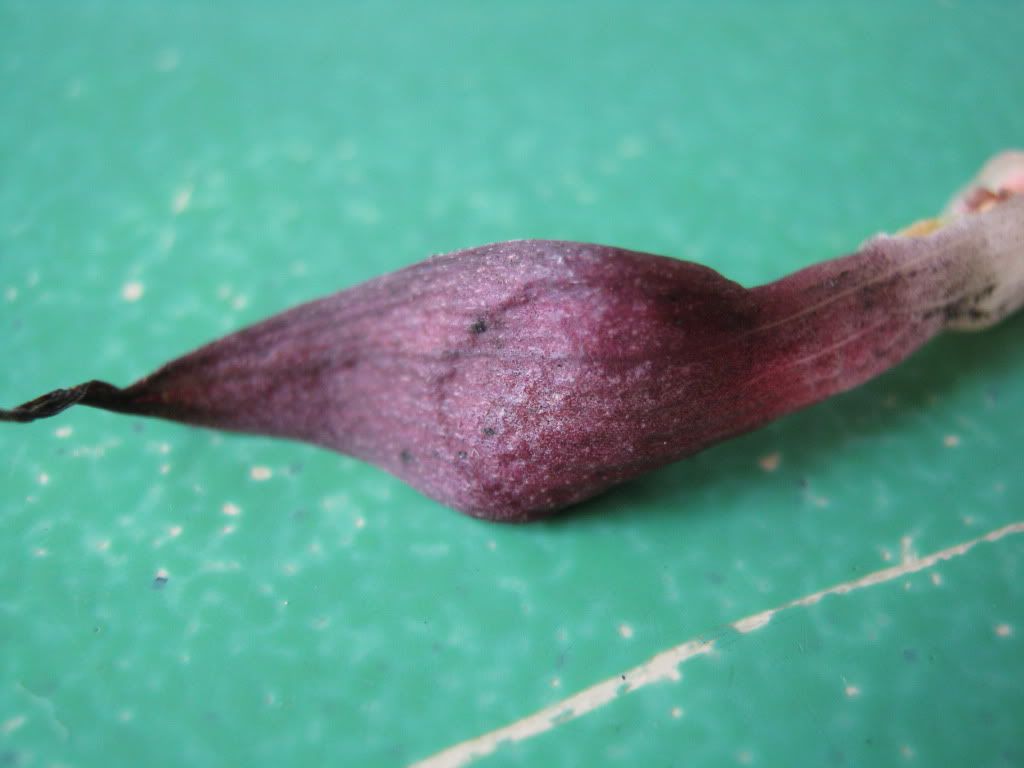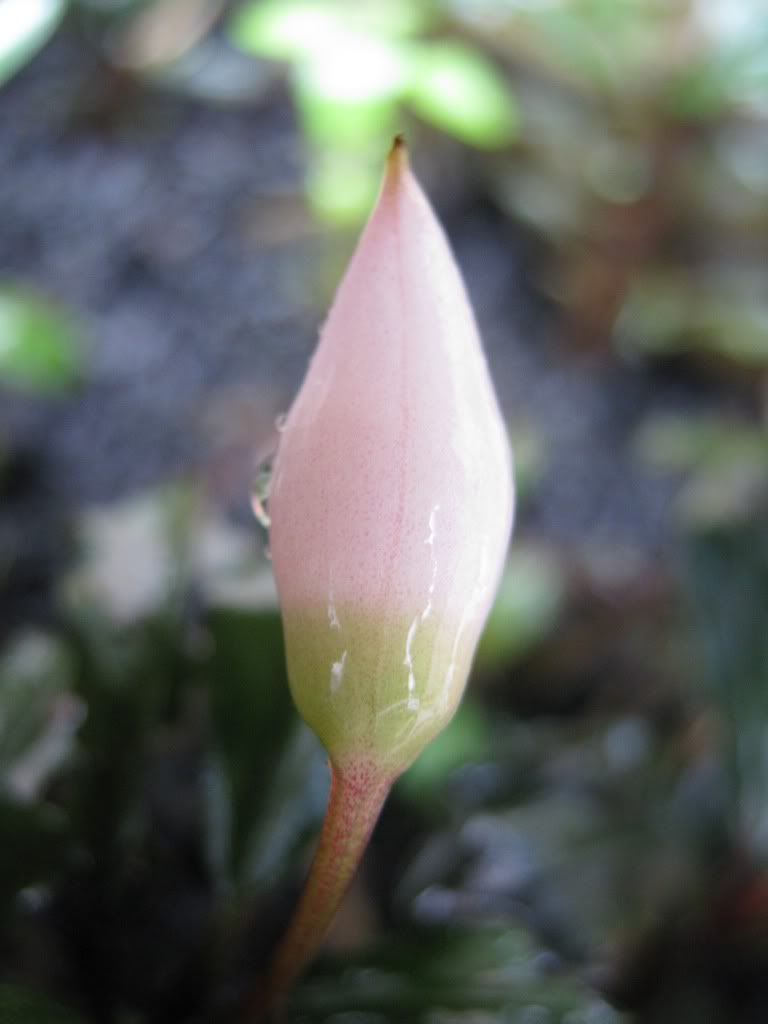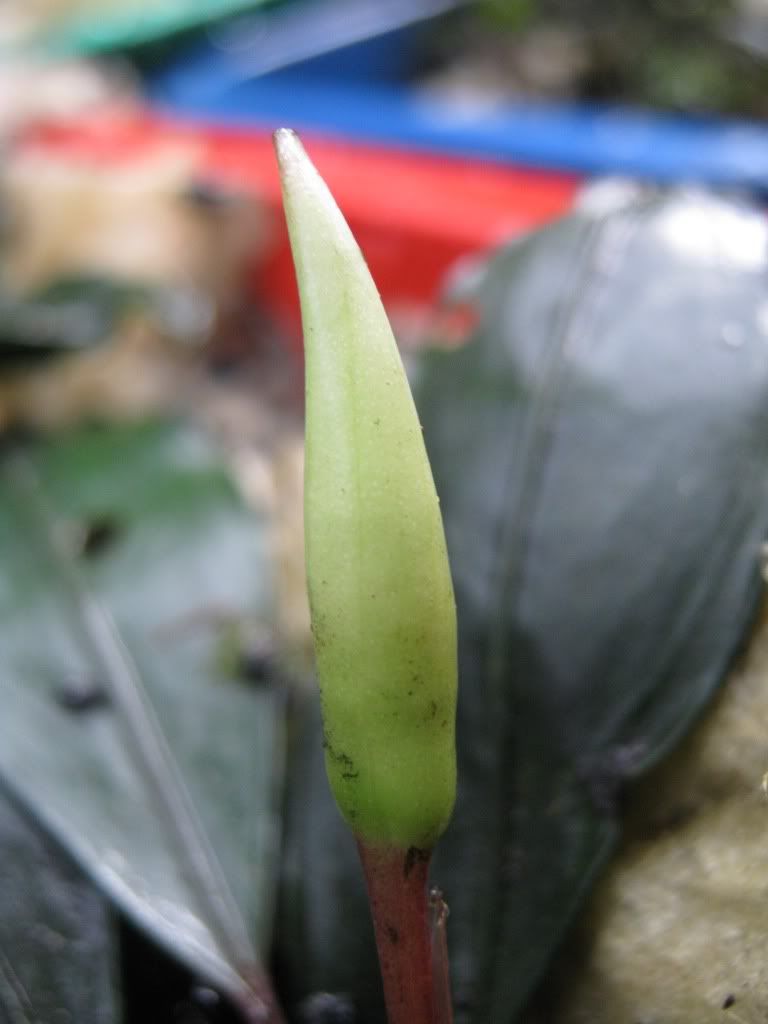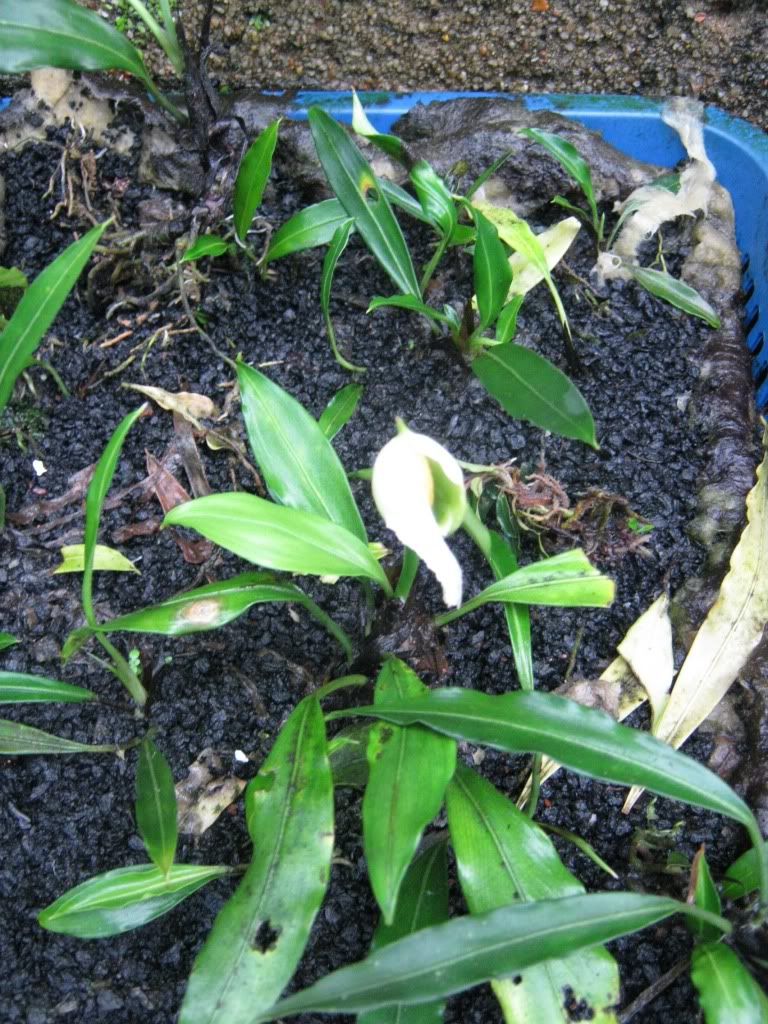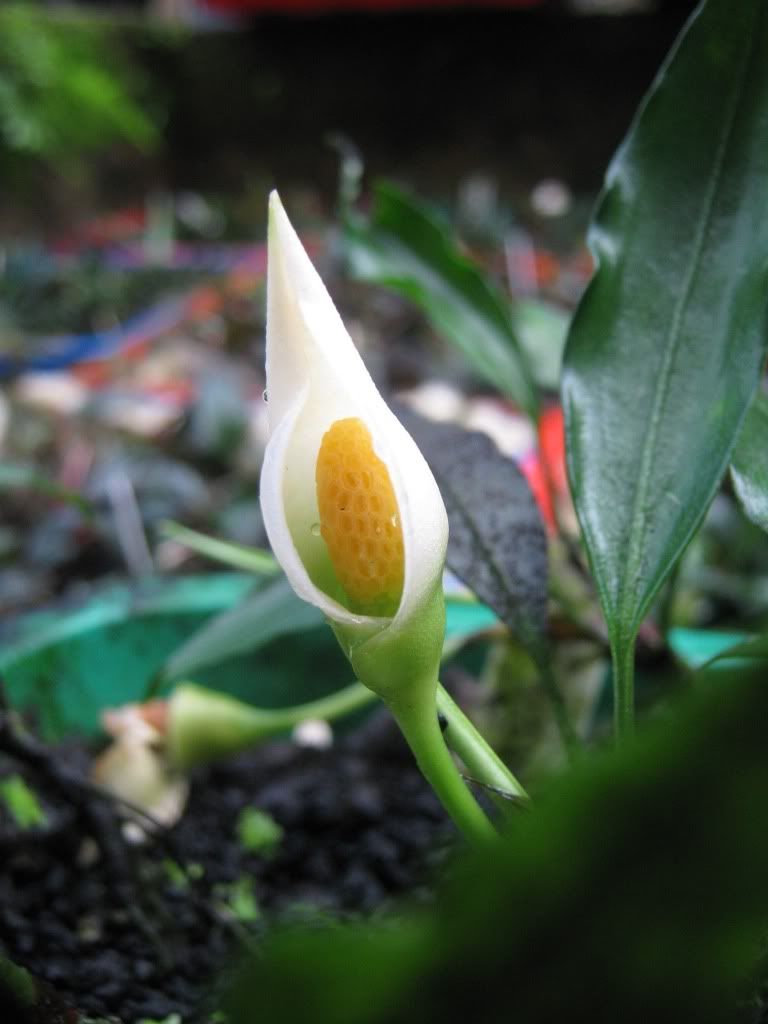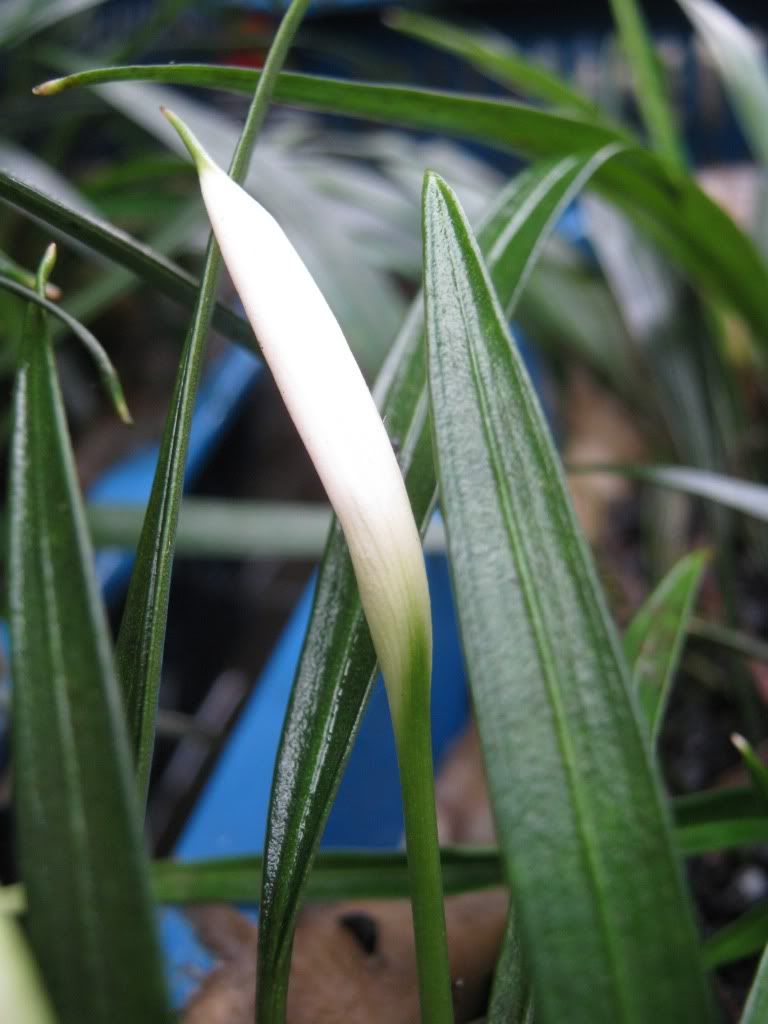The spathe opened a few days later in my home.
The limb of the spathe was red (can you spot the red mite on the limb?). The collar had a distinctive circular line separating the lower smoother portion from the upper rougher limb. This distinctive line could be seen at the back of the limb too as a bulge.
We cut opened the kettle as usual to reveal the male and female portion of the spathe.
The inner wall of the kettle just below the throat had red spots.The spadix was wrapped up within the flap / valve.
A closer look at the spadix, stigma and olfactory bodies.







